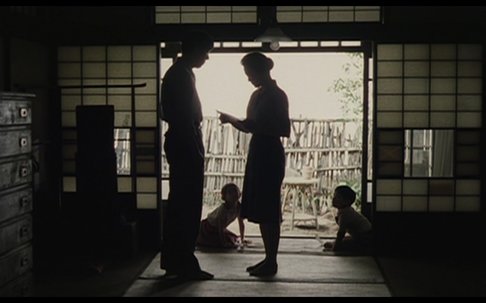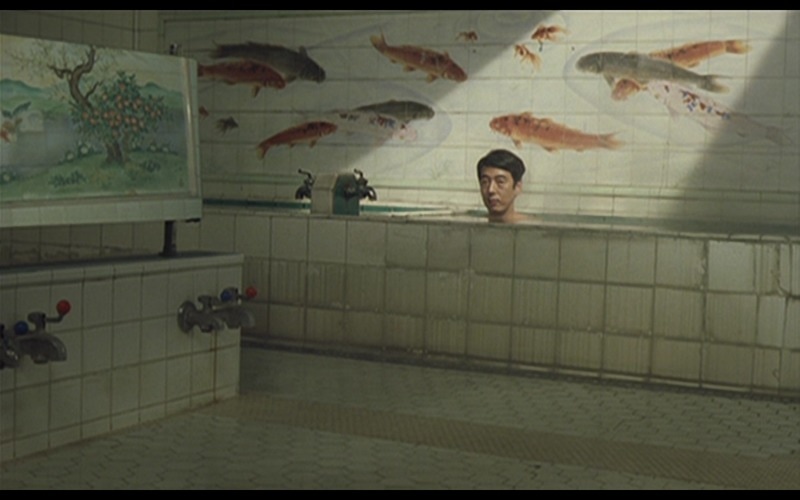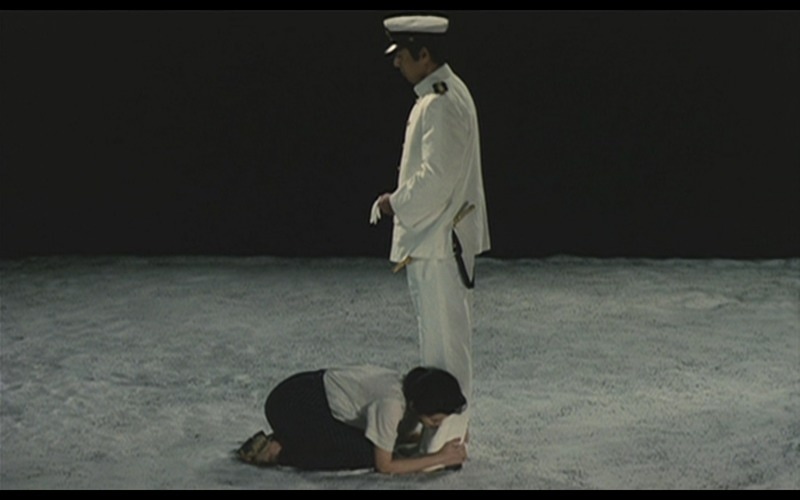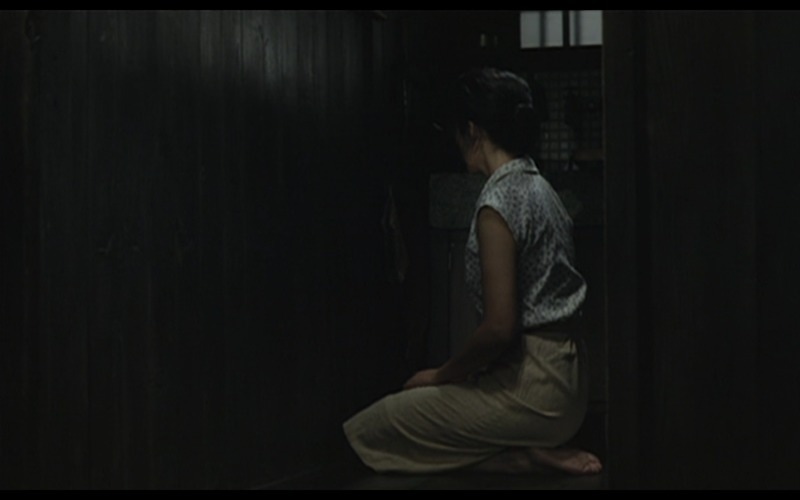 A period drama set in 1950's Japan, Kôhei Oguri's The Sting of Death is a minimalist study of the erosive effect insecurity and distrust can have on a relationship, chronicling a couple whose marriage and overall well-being becomes increasingly combustible after Miho, the wife and mother of two young children, discovers that her husband has been having an affair with another woman. As one could probably summarize, given the title, Kohei Oguri's family-drama is not a particularly uplifting experience, rather a stark exploration of psychological torment experienced specifically by Miho, a woman who simply struggles to put the pieces together for the sake of her family, with her new deep-seeded distrust of her husband being the barrier that stands in the way of her finding solace and happiness once again. While timid early on, Miho grows increasingly hysterical, tormented by her fears of being left behind, unwanted. A woman whose seen her idyllic family life shattered by her husband's transgressions, it is nearly impossible for Miho as a woman, mother, and wife, to return to normal psychologically, with her husband's deceit continually haunting her. There is little reprieve throughout The Sting of Death, little hope for these two characters who attempt to salvage their relationship, and the longer the film goes on, the more it becomes clear that both these characters are deeply-flawed, with their relationship being toxic, beyond repair, each character reinforcing each other's own pain and self doubt through their internal struggle. Make no mistake, The Sting of Death is Miho's tumultuous story first-and-foremost, but Kôhei Oguri's film always remains balanced in its deconstruction, being fair to the adulterous husband, Toshio, capturing how he does have remorse, how he does take responsibility for his past transgressions, even suggesting that his own despondency is at least somewhat related to the trauma of World War II. A stark, tumultuous experience, The Sting of Death may not be a 'fun' watch, but the film's craft is very impressive, a film that is subtle in its style, atmosphere, and surrealism, blending the static, intricate compositions of Ozu with the moody, impressionistic atmosphere one is accustomed to seeing in the works of Michelangelo Antonioni. The opening sequence of The Sting of Death is a masterclass in composition, opening on Miho and Toshio engaged in a conversation, Miho lamenting for her husband to come clean about his transgression. Oguri starts the sequence with a shot-reverse-shot, each character having their own frame. As the conversation intensifies, futher details are revealed, as Oguri pulls the frame back, revealing their sleeping children in the background, the filmmaker taking advantage of the depth of frame, using visuals to escalate the stakes, encapsulating how parent's actions, and their relationship, have far-reaching effects over not only their own selves but also their children's well-being. As The Sting of Death progresses, the film becomes increasingly stark and atmospheric, with high-pitched strings being used in key moments to accentuate the tension and subversive psychological state of Miho. Composition and mise-en-scene are intricate yet critical in telling this sorrowful tale of alienation and fractured romance, with Kôhei Oguri often regulating the children of Toshio and Miho to the background, or at least oft-center to the main quarrel, visually expressing how these children are collateral damage of sorts, deeply affected yet completely detached from this betrayal of trust and brooding insecurities that haunt both Toshio and Miho. Masterfully told, Kôhei Oguri's The Sting of Death encapsulates how lack of trust and insecurity often create emotional trauma, detailing in Miho a woman who is slowly consumed by paranoia due to her distrust, unable to discern truth from fiction, due to her husband's past deceptions.
0 Comments
Leave a Reply. |
AuthorLove of all things cinema brought me here. Archives
June 2023
|



 RSS Feed
RSS Feed
